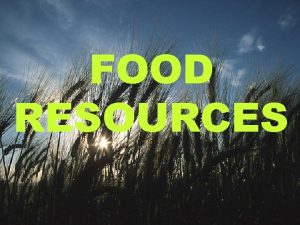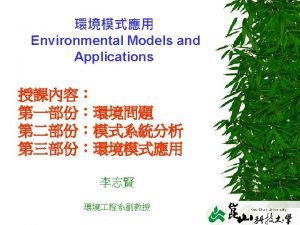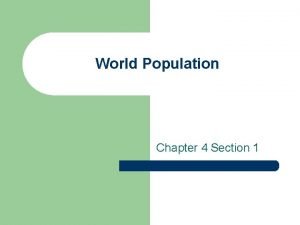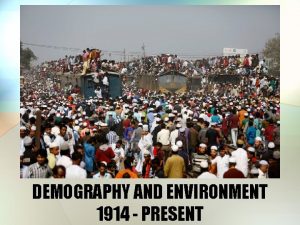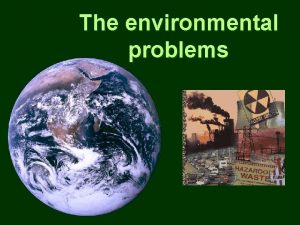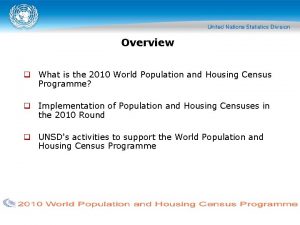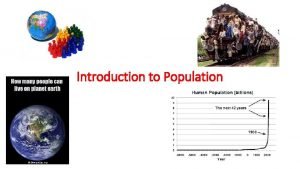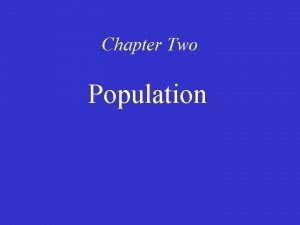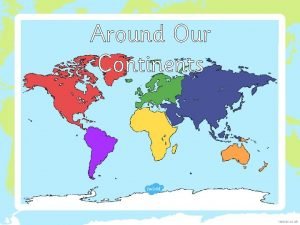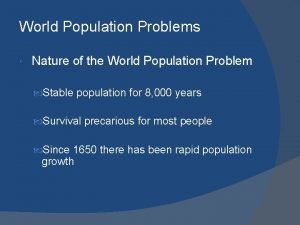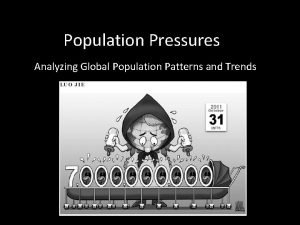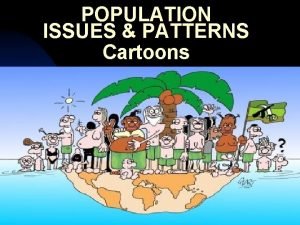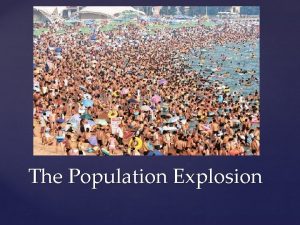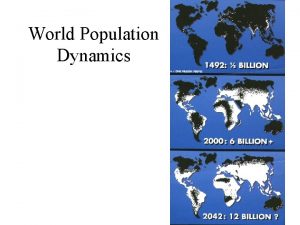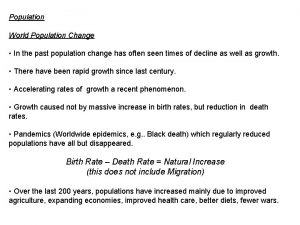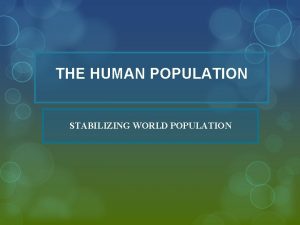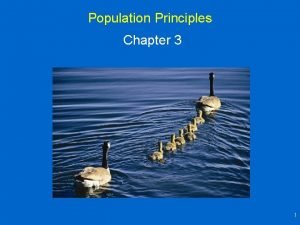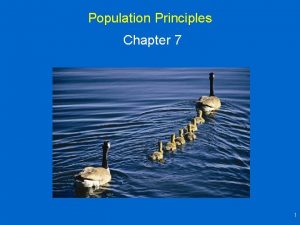Chapter 16 World Food Issues World population 4



















- Slides: 19

Chapter 16: World Food Issues

World population 4. 83 billion or more Perhaps 500 million or more undernourished (plus those in centrally planned economies)

Estimated number of People with Insufficient Protein/Energy Supply by Regions (1974)

Since 1974, China has made great strides in feeding its people, and there is less hunger in Latin America than was true 50 years ago Less developed african nations remain the most important areas of the world for insufficient caloric intake, plus certain countries in other parts of the world, such as Haiti and the Dominican Republic

World Population by Region, 1970 -2000

Africa, Latin America and parts of Asia are still experiencing the most rapid growth in population, and these areas where world hunger persists

World Population by Region, As a % of Total Population

Approximately 7. 1 billion people currently living in the world (US Bureau of the Census, 2010) Asia Africa Latin America Europe Ex Soviet Union Middle East Australia 58. 2% 18. 2% 7. 3% 8. 8% 3. 9% 3. 6% 0. 4% Asia Africa Latin America Europe Ex Soviet Union Middle East Australia

Population in North America, Europe, Oceana, and parts of Asia increasing slowly Africa, Latin America and parts of Asia increasing rapidly Greatest population growth in countries least able to feed themselves

Geographical Distribution of World Food Problem, 1985 Band of Calorie. Deficient Countries ' 65 percent of world population 20 percent of world-wide agricultural production

Percent of Population Undernourished according to UN Statistics (Wikipedia, “malnutrition”)

Caloric Food Requirements & Availability Per Capita

Caloric Food Requirements & Availability Per Capita

Diets in Developed Countries High in Meat & Animal Products High animal protein High fat Diets in Third World countries Low in Meat & Animal Products Lack Animal Protein Soybeans, Rice Low-fat high carbohydrate protein balance Calories not enough

Issues in increasing world food supply Land where needs are greatest not well suited to food production Capital investment to improve production efficiency Where does capital come from? Foreign currency issues Economic development Export market development Genetic improvements Cultural, Institutional, Religious concerns (sacred cows)

U. S. Efforts: 1. Food give-aways Public Law 480 "food for peace" 2. Private donations & assistance 3. Technical assistance Federal government (AID) Universities 4. Loans & Grants for capital investment 5. Efforts at genetic improvement (help grow food, not give them food)

Barriers: 1. Acts of god (hurricane, flood) 2. Cultural & Religious barriers 3. Limitations due to poor soil inadequate rainfall 4. Financial barriers (loans become grants) 5. Institutional barriers Financial incentives to farmers "Low cost" food for consumers

Possibilities: 1. Genetic Breakthroughs 2. Exports of nonfood items by third world countries as a source of foreign currency to buy food 3. Increase arable land base irrigation Saudi Arabia did it but requires major capital investment Cutting the rainforest! 4. Political & Institutional changes "Farm policy" of third world nation 5. Fish farming and food from the Sea

Limits: 1. Generosity of the US & other developed countries 2. Phenomenal genetic breakthroughs occur infrequently and are often unplanned 3. Only huge capital investments could make some land suitable for ag use 4. Greenhouse effect, ozone layer other environmental concerns 5. Bounty of the sea not limitless Malthus--food supply grows arithmetically population geometrically
 Chapter 4 section 1 population dynamics answer key
Chapter 4 section 1 population dynamics answer key Chapter 4 population dynamics study guide answers
Chapter 4 population dynamics study guide answers Population ecology section 1 population dynamics answer key
Population ecology section 1 population dynamics answer key Population ecology section 1 population dynamics
Population ecology section 1 population dynamics Unit 2 food food food
Unit 2 food food food Food chain sequence
Food chain sequence Food resources world food problems
Food resources world food problems Contemporary food issues
Contemporary food issues List three examples of in-transit foodservice operations.
List three examples of in-transit foodservice operations. Vietnam population clock
Vietnam population clock Guided reading activity 4-1 world population
Guided reading activity 4-1 world population Isfj population
Isfj population 1914 world population
1914 world population World's population
World's population 2010 world population
2010 world population Cartogram world population
Cartogram world population Four major population clusters
Four major population clusters World population by continent
World population by continent World population by age
World population by age What's the world's population
What's the world's population






